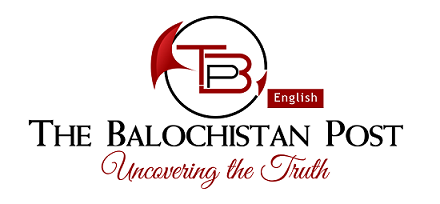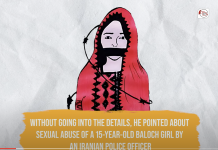Note: The book The Baloch Cultural Heritage authored by renowned intellectual and author of many books, Jan Mahmmad Dashti, is considered one of the most ‘valuable contribution towards understanding the Baloch traditions in their proper historical perspective’.
The first edition of this book was published in 1982, therefore, the book is not readily available in this modern arena of search engines. The Balochistan Post (TBP) believes unavailability of such books is an injustice to students of anthropology and the Baloch youth. TBP will convert the book and publish it in parts for wider reading.
The Baloch Cultural Heritage
Author: Janmahmad
Part – 2
Introduction
Mir Ghous Bakhsh Bizenjo
Mr. Janmahmad has gathered sufficient evidences to contest the theory that the Baloch are Semites. Following the history of both the racial groups, the Semites and the Aryans, he has asserted that the Baloch are Aryans, and that their original home was the Caspian Sea region. Some resemblances of cultural traits of the Baloch with Semites have been dealt with analytically and regarded as merely the result of contacts of people of the Iranian plateau with Mesopotamians or of Semites in various stages of early history. I have gone through the book. It contains reasonably compelling arguments ; a point of view on many of its aspects one may disagree with, but the book is nevertheless a masterly account of the Baloch history and culture. I am confident if researches are conducted on the same lines and with the same fairness, it would go a long way in helping to find further clues about the Baloch racial origin.
The history of the Baloch is, however, still in dark. Research scholars have different opinions. Some say they belong to the northern regions of Elburz, now inhabited by Ashkanis, originally Aryans. Some historians maintain that they came from Halab, Allepo, and are Semites. It is also believed that they are from the old stock of Sumerians of Mesopotamia, while others regard the Baloch as the remnants of the indigenous population of the area. The historians, mostly concern themselves in tracing the Baloch racial origin either from among the Indo-Europeans or the Semites. Neither should one object on these methods for historical research, nor doubt the fact that there had been an admixture of various people with the Baloch like the Scythians, Parthians, Ashkanis, Sakas, Kushans, Huns, Turks and many others ; nor contest the proportion that Baloch, culturally, were greatly influenced by Tigris-Euphrates civilisation at different stages of history. My point is that there is yet a third source of human civilisations which is the main fount for the Indus and Tigris-Euphrates civilisations and very nearer to the Baloch. This civilisation flourished in Susa around 3500 B.C. Ironically, however, least researchers have been conducted on this in the context of Baloch racial origin. Mr. Jan talks of a very ‘remote possibility’ of the Baloch belonging to Elamite tribes. I am sure further research may establish that the possibility is not so remote as presumed by him.
Before the Indo-European and Iranian movements from the Caspian Sea regions and Centre Asia, history records another migration which took place a little over 3500 B.C. from the north. Following the routes north of Elburz and through Zegros, these people stopped in the River Qaroon valley. They settled in and around Sea. From there they later on spread towards the west to the fertile valley of Euphrates and to the east unto the Indus. They were in fact the founders of the great Sumerian civilisation (4300-2371 B.C.) in the west, and Dravidian in the east. History recalls these people as Elmites. The kingdom of Elam also comprised, besides Susa, the present Iranian provinces of Khuzistan, Kurdistan and the other parts of Balochistan, along the sea shores. Its capital was Susa. The Elamites later on conquered Sumer and Akkad and retained them for sometime.
I would like to put the following points before the historians writing on Baloch, for scientific research and analysis in the context of the Baloch racial origin:
(i) The non-Semite Sumerians came from the north of Elburz along Kafkaz and entered the Euphrates valley from Bandar Ling. The Sumerians and the people of the Indus Valley had elements which belonged to the Mediterranean races. The same people inhabiting Jask were mentioned by the historians, travelling with Alexander of Macedon, as dark-complexioned with curly hair, but different from Negroes. Such people still reside in Balochistan. In Panjgur they are called Nakeeb and Darzada in Kech. Most Indologists believe that there are great similarities between the Dravidian civilisation of the Indus and the Euphrates-Tigris civilisation of the Sumerian. I think Balochistan maintained an intermediary link between the two throughout the ancient epochs.
(ii) Dravidians came to the Indian subcontinent from Mesopotamia. A small fraction of them stayed in the hills of Makkuran, who were afterwards called Brahuis.
(iii) The archeological discoveries in Balochistan, especially the findings at Mehrgad, have reminiscences with the Indus and the Middle Eastern civilisations. If analysed in proper historical context, it could be established beyond doubt that the Dravidian and Sumerian civilisations are in fact the product of Elamites, and both had their genesis from Susa.
(iv) The Kurds and the Baloch who belong to the same racial group are not the part of the Indo-European or Iranian migrations. In my opinion, the Kurds and the Baloch (Brahui) are from the Elam tribes.
(v) The Parthian history also confirms the Baloch settlements in the Elburz region. They spoke the same language belonging to Pahlavi, an ancient language of the Parthians. The language they speak now and the customs they follow are closely related to Ashkanis, which is an offshoot of the Parthains. We cannot rule out the possibility that Baloch are originally Parthians and may have mixed up with races like the Sakas and Kushans.
As regard their Semitic origin, no paper evidences have been put forwards so far. There appear some links with Mesopotamia which are discernible in culture, especially in mythologies. Moreover, the Baloch tribal set-up is closer to Sumerians. This may be because of the proximity of the Baloch with old Mesopotamian tribes. Even if a group of the, for instance Rind, migrates from Allepo, they could not be regarded as Semites because all inhabitants of Allepo were not Semites.
To determine the racial kinship, a close look into the Baloch culture would be imperative. Their customs and traditions have close links with the Central Asian culture, to which the Baloch originally belonged. Take the example of dress. Baloch wear Salwar, trousers, and turban for head. Both pertain to the people of Central Asia. From Balochistan to Afghanistan and unto Kurdish region, in major parts of Central Asia, people wear trousers. Shifting towards Sind and the Panjab or areas which are part of the subcontinent, the difference is quite clear. Throughout India, Burma and most of the Himalayan regions, tehband is used. Greeks, Chinese and even Arabs also wear tehband. Salwar is the symbol of Baloch culture, and distinguishes the Baloch from most other people. Similarly, the musical instruments belonging to particular nations are also indicative of their relation with certain other races. The Baloch possess tambura which basically belonged to them ; others like the Pathans, the Panjabis and Sindhis do not use it, while the Kurds and Hazara Mongols in Central Asia also use tambura. In contrast, the sarangi is shared by all. The typical tuning of nal which is called nal-o-gul or nal-o-sur, belongs to the Baloch only. One tunes the nal while another seconds him. Nal is an instrument which is used in reciting epics and a variety of other songs including melodies. Such things and their nature disclose the origin of the Baloch, and help to establish links, if any, with peoples of different regions.
[to be continued]
Disclaimer: The views and opinions expressed in this article are those of the author and do not necessarily reflect the official policy or position of The Balochistan Post or any of its editors.






























